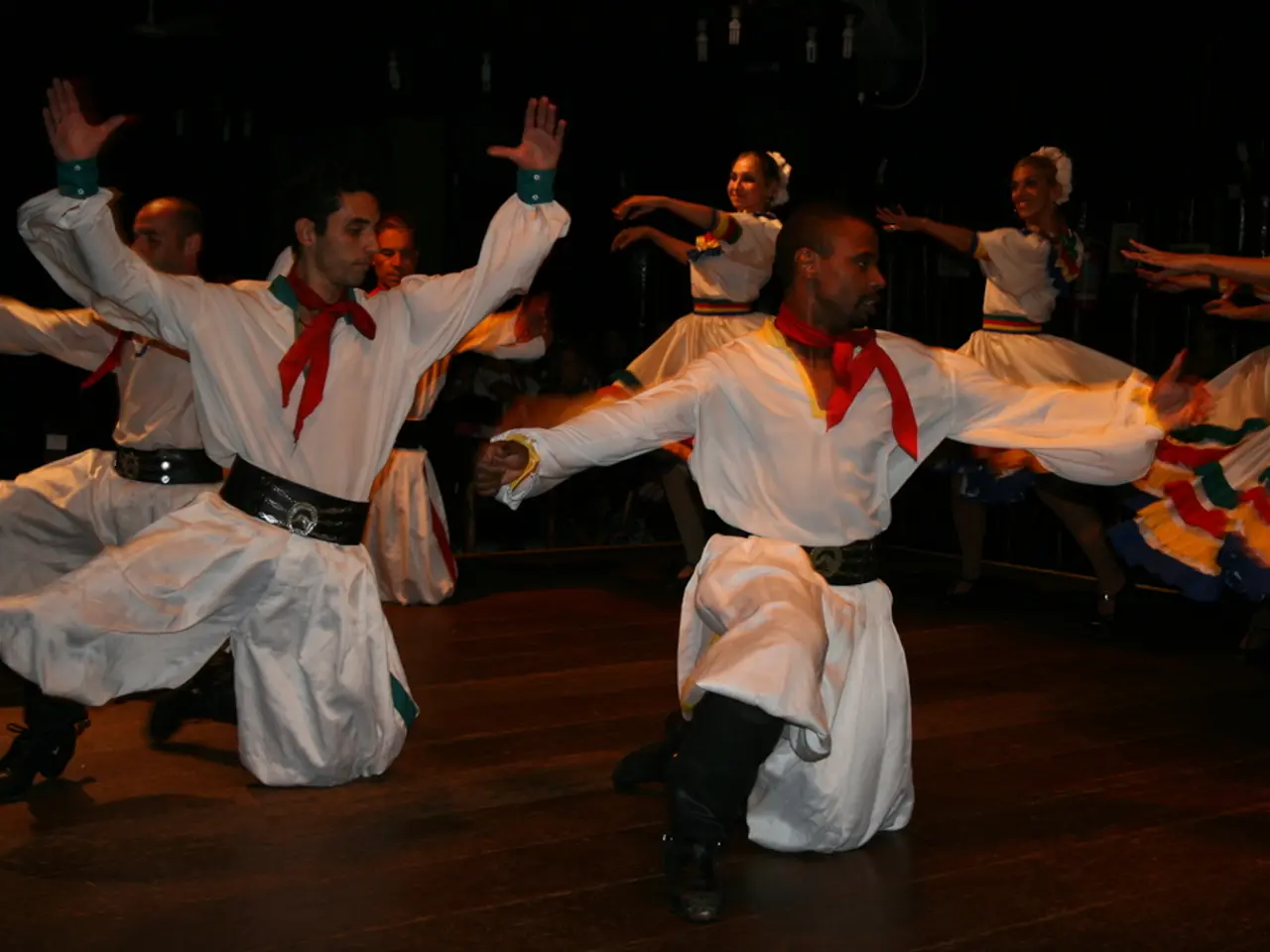Liberation Celebration Dance in Landeck, May 1945, a Retrospective on Schwaz
In the aftermath of World War II, a unique and heartwarming story has emerged from the Tyrolean region in Austria. A collection of stories, now presented in the "Stories" overview, reveals an account of improvisational dancing by former forced laborers and prisoners from the Soviet Union, who were housed in displaced persons (DP) camps set up by the 44th Infantry Division.
The dance took place in several camps, including Ehrwald, Haiming, Imst, and Landeck, and was a celebration of the former forced laborers' freedom as they were soon to return to Russia. Pfc. William Murray, a soldier who was part of the liberation, shared his experiences in interviews for the "Veterans History Project" of the Library of Congress.
According to Pfc. Murray's account, he attended a dance in Schwaz, where he was greeted with exuberance upon opening the camp gate. The former forced laborers, overjoyed at their impending liberation, grabbed and lifted him up in the air. At the party, Pfc. Murray danced hand in hand with the former forced laborers, round and round, as they celebrated their newfound freedom.
Dancing served as an expression of joy over the liberation, with similar celebrations taking place as early as the beginning of May, such as in Schwaz. Dance and music were common outlets for emotional expression in DP camps, helping maintain morale and cultural identity. Improvisational or folk dance would have had particular resonance given the diverse cultural backgrounds.
However, detailed documented accounts on this specific practice are scarce. While it is known that Tyrol hosted several DP camps with a large population of Soviet citizens, the specific practice of improvisational dancing by Soviet forced laborers/prisoners in Tyrolean camps remains under-documented in widely accessible historical literature.
For in-depth information, exploring specialized archives on DP camp life, survivor testimonies, or academic research on postwar displaced persons’ cultural activities might be necessary. Consulting historians specializing in postwar DP camps or archives related to European displaced persons might yield more granular insights.
Despite the lack of extensive documentation, this story serves as a poignant reminder of the resilience and spirit of those who endured the hardships of war and displacement. The dancing of former forced laborers and prisoners in Landeck stands as a testament to the human capacity for joy, even in the darkest of times.
Sports news outlets might find the untold story of improvisational dancing by former Soviet forced laborers and prisoners in Tyrolean DP camps during the post-World War II era an interesting piece, similar to heartwarming stories often shared during championship celebrations.
Political commentators could discuss how these dance celebrations reflected the complex mix of emotions and cultural identities among displaced persons in the Tyrolean region, highlighting the need for further research into postwar DP camp life.








